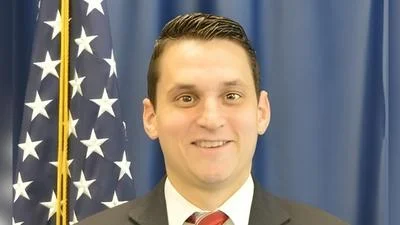The Congressional Record is a unique source of public documentation. It started in 1873, documenting nearly all the major and minor policies being discussed and debated.
“KNOW THE CBRN TERRORISM THREATS TO TRANSPORTATION ACT” mentioning the U.S. Dept. of Energy was published in the House of Representatives section on pages H6989-H6991 on Oct. 20, 2015.
The publication is reproduced in full below:
KNOW THE CBRN TERRORISM THREATS TO TRANSPORTATION ACT
Mr. DONOVAN. Mr. Speaker, I move to suspend the rules and pass the bill (H.R. 3350) to require a terrorism threat assessment regarding the transportation of chemical, biological, nuclear, and radiological materials through United States land borders and within the United States, and for other purposes.
The Clerk read the title of the bill.
The text of the bill is as follows:
H.R. 3350
Be it enacted by the Senate and House of Representatives of the United States of America in Congress assembled,
SECTION 1. SHORT TITLE.
This Act may be cited as the ``Know the CBRN Terrorism Threats to Transportation Act''.
SEC. 2. TERRORISM THREAT ASSESSMENT.
(a) In General.--Not later than 90 days after the date of the enactment of this Act, the Secretary of Homeland Security, acting through the Under Secretary of Intelligence and Analysis, shall conduct a terrorism threat assessment of the transportation of chemical, biological, nuclear, and radiological materials through United States land borders and within the United States.
(b) Consultation.--In preparing the terrorism threat assessment required under subsection (a), the Under Secretary for Intelligence and Analysis shall consult with the Administrator of the Transportation Security Administration, the Commissioner of U.S. Customs and Border Protection, and the heads of other Federal departments and agencies, as appropriate, to ensure that such terrorism threat assessment is informed by current information about homeland security threats.
(c) Distribution.--Upon completion of the terrorism threat assessment required under subsection (a), the Under Secretary for Intelligence and Analysis shall disseminate such terrorism threat assessment to Federal partners, including the Department of Transportation and the Department of Energy, and State and local partners, including the National Network of Fusion Centers.
The SPEAKER pro tempore. Pursuant to the rule, the gentleman from New York (Mr. Donovan) and the gentleman from New York (Mr. Higgins) each will control 20 minutes.
The Chair recognizes the gentleman from New York (Mr. Donovan).
General Leave
Mr. DONOVAN. Mr. Speaker, I ask unanimous consent that all Members have 5 legislative days within which to revise and extend their remarks and include any extraneous material on the bill under consideration.
The SPEAKER pro tempore. Is there objection to the request of the gentleman from New York?
There was no objection.
Mr. DONOVAN. Mr. Speaker, I yield myself such time as I may consume.
Mr. Speaker, I rise today in support of H.R. 3350, the Know the CBRN Terrorism Threats to Transportation Act, introduced by the gentleman from New York (Mr. Higgins).
This bill requires the Department of Homeland Security, through the Office of Intelligence and Analysis, to conduct a terrorism threat assessment of the transportation of chemical, biological, nuclear, and radiological materials across our land borders and within the United States.
As a fellow New Yorker, I share Congressman Higgins' security concerns related to the transportation of spent nuclear fuel across the Canadian-New York border. It is an appropriate response to have the Department of Homeland Security conduct a risk assessment related to this initiative.
DHS is responsible for assessing potential terror threats against the homeland. Threats related to CBRN materials are one of the most serious.
Terrorist groups have long had an interest in using CBRN materials. In addition to concerns that terror groups may try to create or purchase CBRN materials, there are concerns that terrorists could exploit such materials with legitimate commercial uses, including when such materials are transported from one location to another. It is this concern that the bill seeks to address.
The bill also directs that the results of the assessment be shared with relevant Federal, State, and local agencies, including the Department of Energy and the National Network of Fusion Centers. Coordination and information-sharing within the Department, as well as between the Department and other agencies, is critical for securing the homeland efficiently.
This is a commonsense bill, and I encourage my colleagues to support this bill.
I reserve the balance of my time.
{time} 1630
Mr. HIGGINS. Mr. Speaker, I yield myself such time as I may consume.
I rise in support of H.R. 3350, the Know the CBRN Terrorism Threats to Transportation Act.
Mr. Speaker, I thank the chairman of the subcommittee, Mr. King of New York; Chairman McCaul; and my ranking member, Mr. Thompson of Mississippi, for their support of my bill.
H.R. 3350, the Know the CBRN Terrorism Threats to Transportation Act, would direct the Department of Homeland Security's Office of Intelligence and Analysis to conduct a terrorism threat assessment of the risks associated with transportation of chemical, biological, nuclear, and radiological materials.
Terrorists and militant groups have expressed an interest in using weapons of mass destruction, especially those utilizing chemical, biological, radiological, and nuclear, known as CBRN, agents or materials.
In fact, according to a recent Associated Press investigation, the FBI uncovered a plot by rogue Moldavian operatives to sell nuclear material to foreign terrorist organizations that have an interest in targeting the United States.
Next year the Department of Energy plans to allow the transporting by truck of highly enriched uranium from Canada to South Carolina. As a cost-saving measure, the planned shipment would be in liquid form.
These trucks are scheduled to enter the United States via the Peace Bridge in Buffalo, New York. An attack or an accident involving one of these trucks crossing the Peace Bridge could have devastating consequences.
The Peace Bridge is the busiest passenger crossing on the northern border and the second busiest cargo port of entry. Closing the bridge for an extended period of time would cause great economic harm to the region and national economies. Further, an attack could contaminate the Great Lakes, which contain 84 percent of North America's surface freshwater, with highly radioactive material.
Despite these risks, the Department of Energy approved this route, relying on an analysis of this route that is 20 years old, and did not anticipate carrying such high-level waste. In other words, the Federal Government is about to begin importing highly radioactive material, which has never been shipped in this manner, using outdated, pre-9/11 information that does not reflect the threats we face today.
To ensure that all relevant Federal agencies, including the Department of Energy, have the information they need to make decisions and develop policies that are informed by the terrorism threat picture, my bill would direct the Department of Homeland Security to share its assessment with Federal partners.
Mr. Speaker, I urge Members to support H.R. 3350, a measure that will not only help ensure the Department of Energy has the information it needs with respect to transporting dangerous material through high-risk areas throughout the United States, but that other Federal agencies who are faced with similar questions are able to make better informed decisions.
Many of the routes used for the transport of CBRN materials were approved nearly 20 years ago and, as such, reflect a pre-9/11 mindset with respect to the threat and consequences of terrorism.
My bill will ensure that the Department of Homeland Security assesses and shares threat information with the Department of Energy and other Federal agencies to ensure that they have the information needed to reach complicated decisions about transporting dangerous nuclear material throughout our communities.
Enactment of my legislation will send a message to citizens at risk in Buffalo and beyond that we care about keeping them secure and ensuring that Federal policy is informed by the best information we have on terrorism threats.
With that, I ask for my colleagues' support.
I yield back the balance of my time.
Mr. DONOVAN. Mr. Speaker, I yield myself such time as I may consume.
Mr. Speaker, it is common sense to require DHS to conduct terrorism threat assessments for the legitimate storage, sale, or transportation of CBRN materials.
This bill complements the bill the House just considered, H.R. 3493, the Securing the Cities Act of 2015. We need to take all appropriate measures to safeguard our citizens from nuclear weapons and weapons of mass destruction.
The Securing the Cities program creates a warning and detection system around New York City and other high-risk locations. H.R. 3350 supplements this concept by requiring a proactive approach in reviewing security concerns related to the transportation of CBRN materials.
In closing, I wanted to express appreciation to Congressman Higgins, the ranking member of the Counterterrorism and Intelligence Subcommittee, and to the subcommittee chairman, Peter King, for moving H.R. 3350.
I urge support for the underlying measure.
I yield back the balance of my time.
Mrs. LAWRENCE. Mr. Speaker, I rise today in support of H.R. 3350, the Know the CBRN Terrorism Threats to Transportation Act. The Department of Homeland Security and the Under Secretary of Intelligence and Analysis play a critical role in the safety of American families. Their work assessing the transportation of chemical, biological, nuclear, and radiological (CBRN) materials is essential for maintaining a high level of security for the country. This is why the Know the CBRN Terrorism Threats to Transportation Act must be passed.
The fact that my home state shares an international border gives me insight and understanding of the issues that border communities face. Extremist groups have an array of potential agents and delivery methods to choose from for chemical, biological, radiological, or nuclear attacks. Castor beans, cyanide, sarin and other chemical agents are examples of the spectrum of terrorist CBRN threats. These materials need to be assessed in order to ensure the safety of not only our border communities, but our nation.
The Know the CBRN Terrorism Threats to Transportation Act requires a three step process for improving the safety of our borders. First, to prepare for the execution of a terrorism threat assessment regarding CBNR materials, the Under Secretary for Intelligence and Analysis will consult with the Administrator of the Transportation Security Administration and the heads of other federal departments and agencies. This is critical in ensuring that the assessment is conducted with the highest level of expertise. Next, the terrorism threat assessment of the transportation of CBNR materials can be conducted. Finally, the assessment must be distributed to federal, state, and local partners so that everyone protecting our borders is informed and updated. At a time when this information should be readily available, we are still waiting to find the best process to address this critical issue.
I would like to close by saying that I am proud of our chamber for taking this important step to ensure that the data on the transportation of hazardous materials is readily available and accessible. I also want to thank my colleagues for understanding the importance of information regarding CBRN threats and the role of this information in strengthening our security.
The SPEAKER pro tempore. The question is on the motion offered by the gentleman from New York (Mr. Donovan) that the House suspend the rules and pass the bill, H.R. 3350.
The question was taken.
The SPEAKER pro tempore. In the opinion of the Chair, two-thirds being in the affirmative, the ayes have it.
Mr. DONOVAN. Mr. Speaker, on that I demand the yeas and nays.
The yeas and nays were ordered.
The SPEAKER pro tempore. Pursuant to clause 8 of rule XX, further proceedings on this motion will be postponed.
____________________








